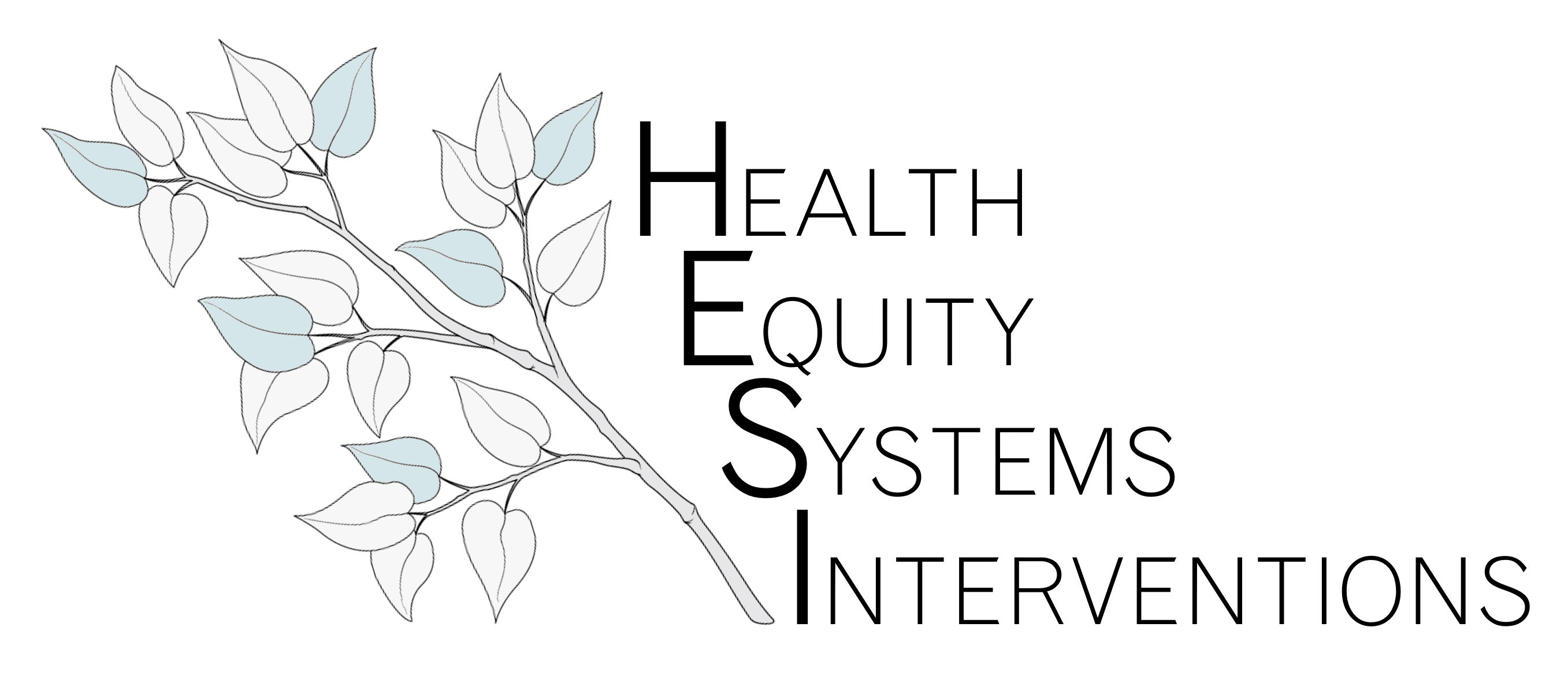We use cookies on this site to enhance your experience.
By selecting “Accept” and continuing to use this website, you consent to the use of cookies.

The Health Equity Systems Interventions (HESI) Research Group focuses on health equity. A fair distribution of well-being across society (health equity) is an important indicator of places that are socially just.
Systems of health equity are maintained and influenced by a wide array of structural determinants, such as government and institutional policies, approaches to governance, and dominant cultural and societal values.
Examples of structural determinant variables include:
The World Health Organization’s 2010 Conceptual Framework for Action on the Social Determinants of Health is an example of a values statement related to health inequities.
Governments have a key role in developing and maintaining health equity systems. All governments manage some aspect of how different groups of people experience well-being, and coordinate how each of us are supported by social welfare of various types:
Thus, some governments work to encourage health promotion and prevention activities across all departments (intersectoral models), including the implementation of ideas like Health in All Policies where governance is reoriented towards intersectoral action for well-being. Such health equity systems are maintained by an array of governance structures, such as policies (e.g. Quebec’s 2001 Public Health Act) and long-term strategies (e.g. Quebec’s 2016 Government Policy of Prevention in Health) as well as the use of use of governance tools, such as the Ontario Ministry of Health and Long-Term Care’s Health Equity Impact Assessment tool.
Neighbourhood environments are particularly useful units for intervention for planning and managing health equity systems since people tend to spend a lot of time in a few key neighbourhoods. Policies and programs at all levels of government and across departments manifest in the places where we live, work, study and play, and shape our well-being.
For example, how we each experience chronic stress across our lives will be shaped by the stressful aspects of our neighbourhoods (perhaps related to transportation networks or crime rates), and the resources that might also be present (such as affordable child care or calming green spaces). In turn, many major cities globally currently have specific neighbourhood planning strategies, such as the City of Waterloo’s Neighbourhood Strategy. Partners in neighbourhood-based community service organizations and private sector also contribute to health equity outcomes through their intentional and unintentional efforts.
Finally, given the normative quality of concepts such as equity, fairness and justice, there may be vigorous political debates that shape health equity systems. Some key questions include:
Existing research evidence suggests that chronic stress underlies some of the differences in health between populations: rich/poor, white/racialized/Indigenous, men/women, among other differences. Neighbourhood settings can expose people to an array of stressful and supportive conditions. Methods and tools that include the perspective of residents and account for the role of digital resources are needed to support resilience planning at a neighbourhood scale to support greater equity in cities.
The SCERN team uses an interdisciplinary approach to develop approaches that city planners and community members can use to identify neighbourhoods of interest, locate neighbourhood places of influence, and plan for action to strengthen community resilience.
More information can be found at scern.ca.
The SCERN project involves an international collaboration of researchers including:
Ketan Shankardass leads the HARMONICS project which has conducted a series of realist explanatory case studies of governments that have tried to use Health in All Policies (HiAP), a collaborative approach that integrates and articulates health considerations into policymaking across sectors, to improve the health of all communities and people. Our research aims to better understand how to implement HiAP successfully.
Moving from a governance approach of working in policy silos (i.e. a ministry gets a specific mandate and dedicated budget and goes to work with little to no interaction with other ministries) to something more integrated, like HiAP, can be challenging. In our case studies, we are learning about what tools and strategies have helped, or not helped, to involve the participation of different sectors in this initiative.
To date, our team has conducted case studies at the national, regional and local levels, including in Norway, Finland, Thailand, Ecuador, California, Scotland, Sweden, Quebec and South Australia. Publications range from decision-maker reports and databases, theoretical and methodological contributions. Our recent series of policy briefs about the implementation of HiAP in 5 local settings across Ontario and Quebec area are available.
Governments know there are health inequities. They measure these inequities from time to time; they know what they can do to address them; but they generally haven't done much to address health inequalities since the early 1980's when the political landscape entered the Neoliberal Era. This lack of political will may reflect a lack of awareness about the problem itself, and an incomplete understanding of why there are health inequities in both the general voting public and the government. Our research team aims to fill this gap through research completed by faculty and students in cooperation with community and health system partners.
This research project aims to study the levels of awareness and understanding of the Ontario public about income-related health inequalities. Currently, our team is working to develop educational interventions with partners in public health units to target subgroups of the population who are under-aware in an effort to grow political will for health equity interventions.
We've published a series of papers that have examined this topic using data from a 2010 telephone survey.